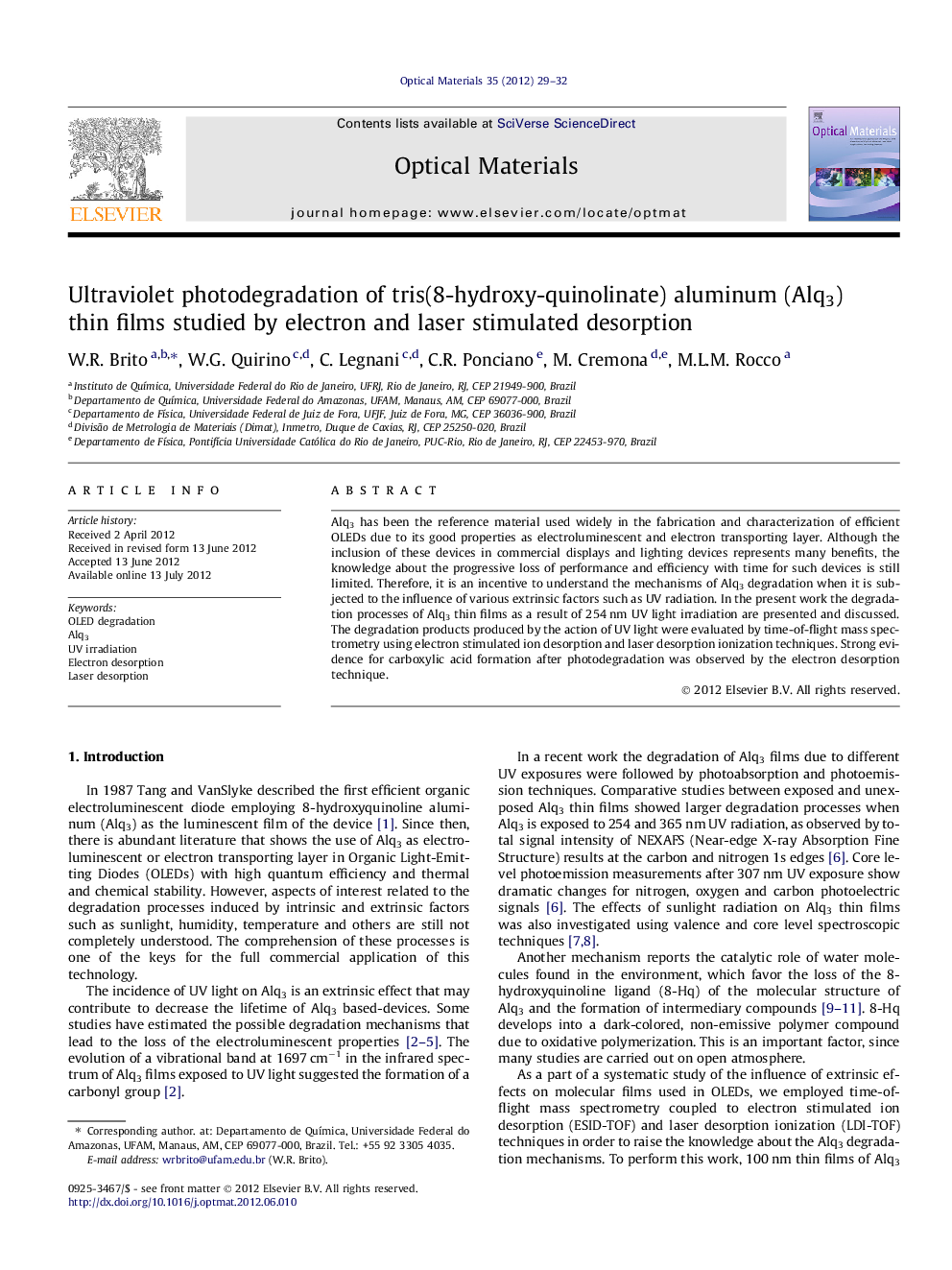| Article ID | Journal | Published Year | Pages | File Type |
|---|---|---|---|---|
| 1495263 | Optical Materials | 2012 | 4 Pages |
Alq3 has been the reference material used widely in the fabrication and characterization of efficient OLEDs due to its good properties as electroluminescent and electron transporting layer. Although the inclusion of these devices in commercial displays and lighting devices represents many benefits, the knowledge about the progressive loss of performance and efficiency with time for such devices is still limited. Therefore, it is an incentive to understand the mechanisms of Alq3 degradation when it is subjected to the influence of various extrinsic factors such as UV radiation. In the present work the degradation processes of Alq3 thin films as a result of 254 nm UV light irradiation are presented and discussed. The degradation products produced by the action of UV light were evaluated by time-of-flight mass spectrometry using electron stimulated ion desorption and laser desorption ionization techniques. Strong evidence for carboxylic acid formation after photodegradation was observed by the electron desorption technique.
► Insight into the mechanisms of photodegradation of Alq3 thin films exposed to UV light by desorption techniques. ► Strong evidence for carboxylic acid formation after photodegradation. ► This study corroborates previous theoretical assignment, giving clear insight into the degradation mechanism. ► It also contributes for the assignment of laser desorption results.
